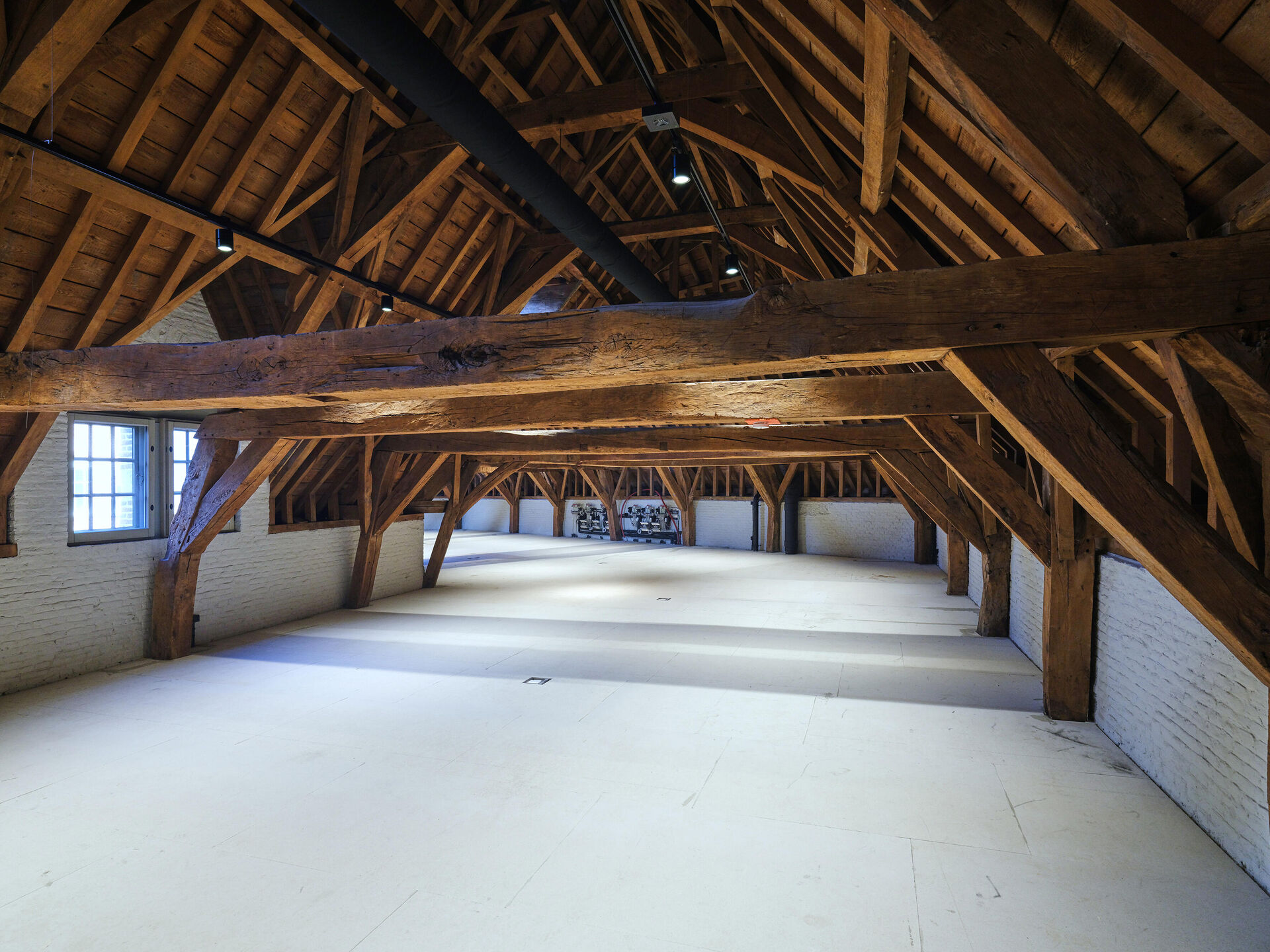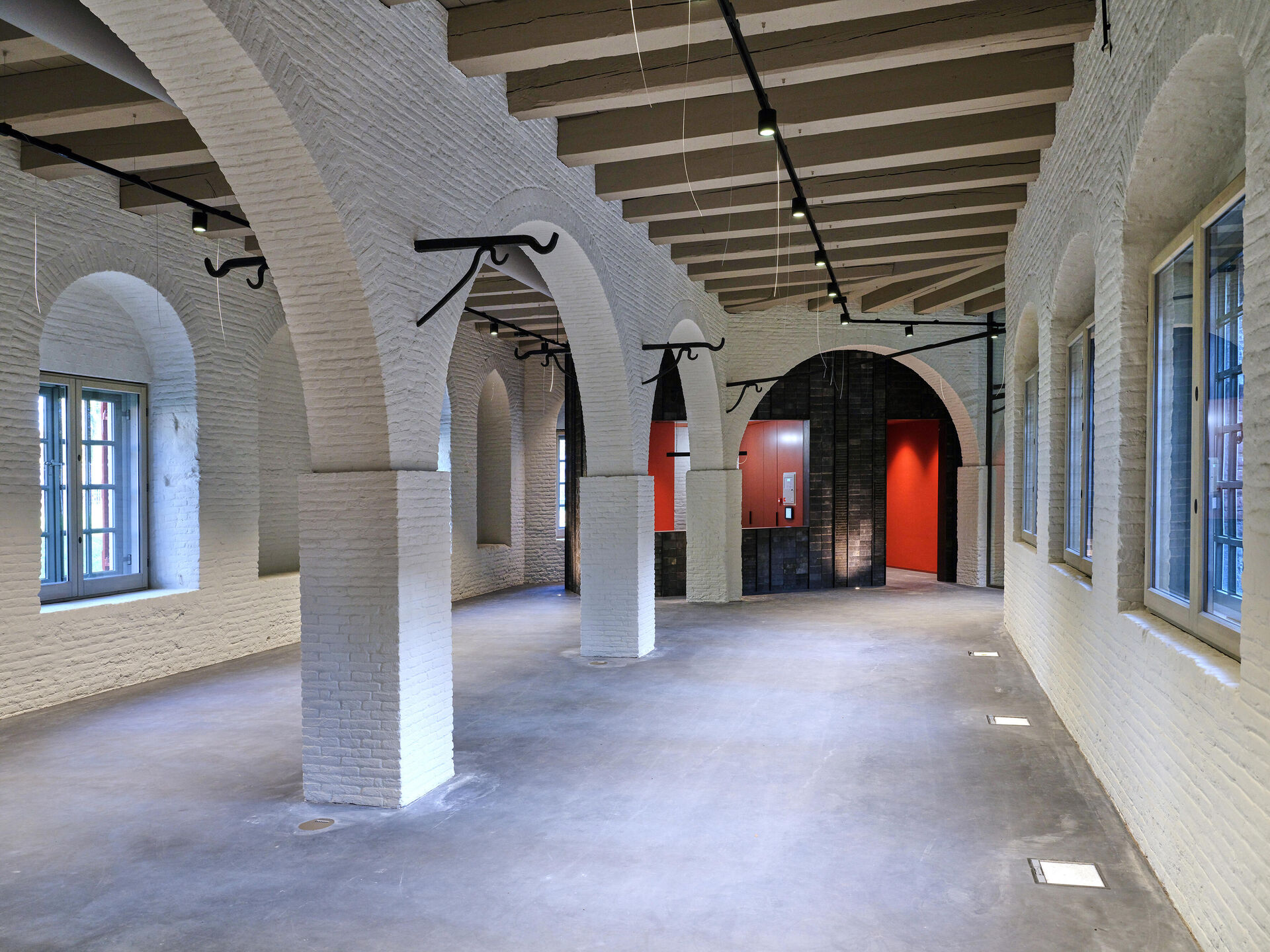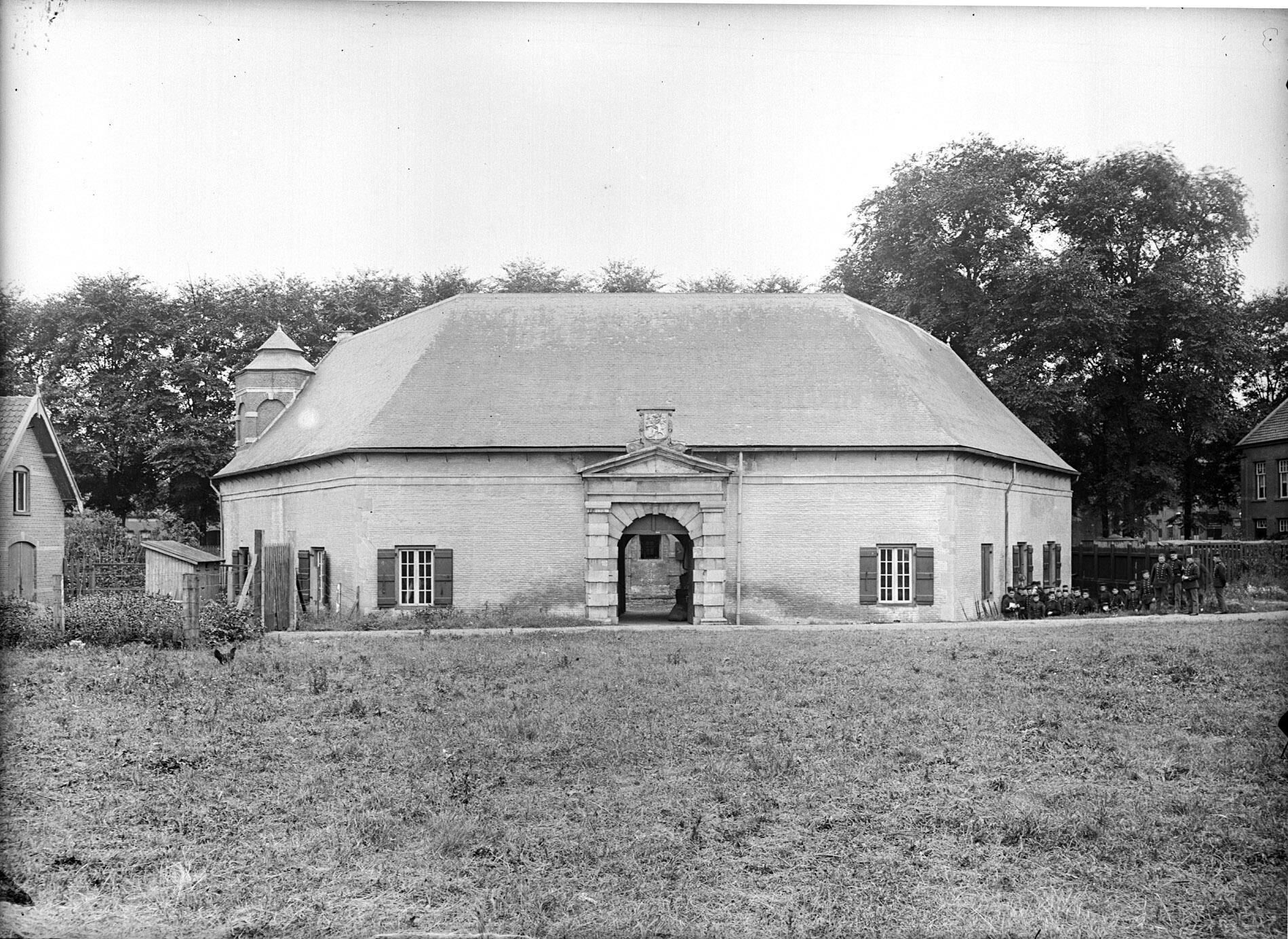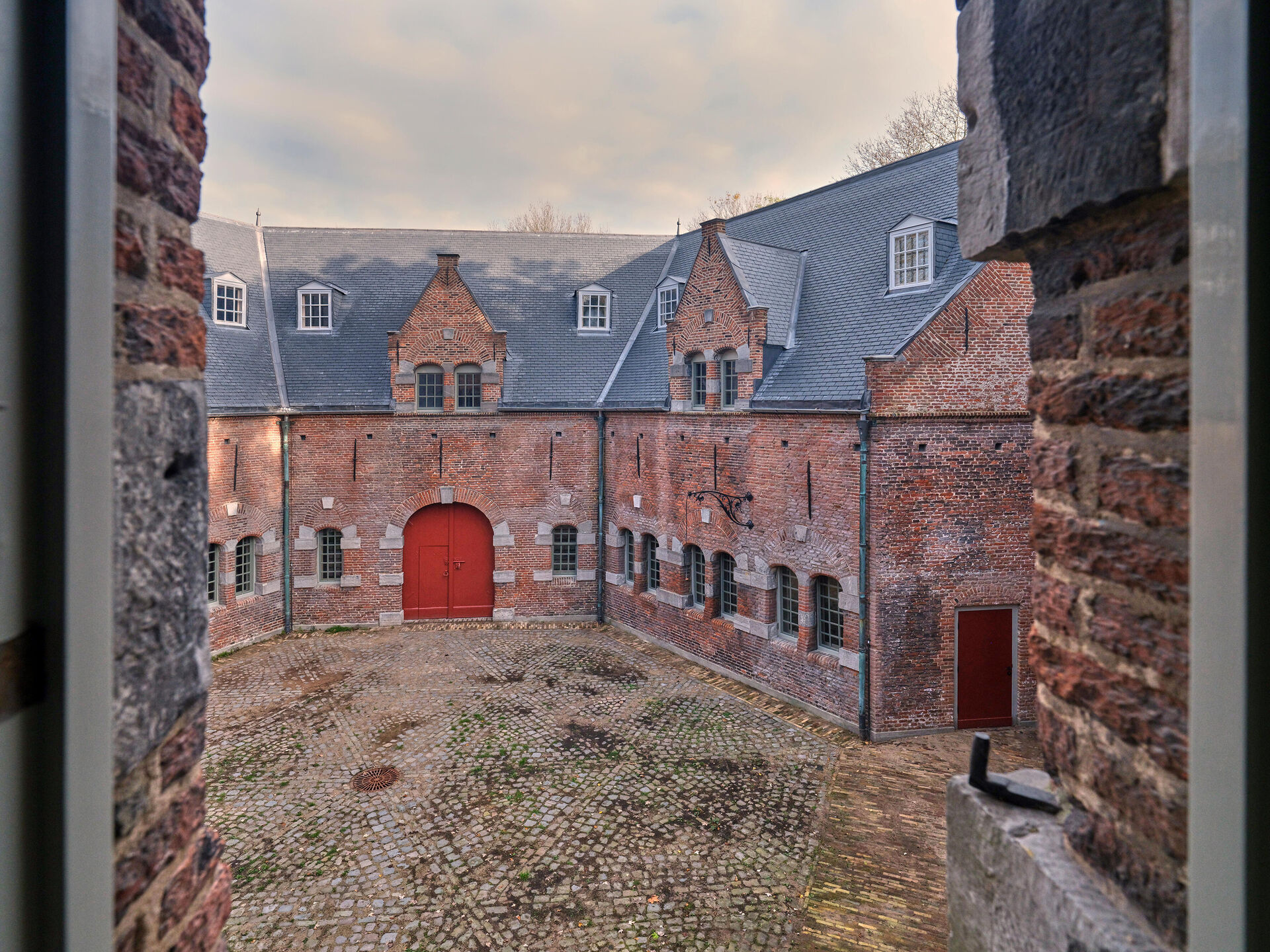- Culture
- Transformation
- Restoration
- Sustainability
- Advice
BiermanHenket has been intensively involved in the repurposing and restoration of the seventeenth-century Kruithuis in 's-Hertogenbosch since the beginning: first around the feasibility study, now with a careful, realistic and well-considered design. More than four hundred years after its original construction, the striking and nationally listed building is now facing a new future as a fortress and water museum.
The Kruithuis, the only gunpowder warehouse in the Netherlands that has been preserved from the Eighty Years' War, is an important national monument. The new fortress museum tells the story of the place, the Eighty Years' War and the siege of 's-Hertogenbosch in 1629. In addition, the water museum, under the auspices of UNESCO, examines four centuries of inundation around 's-Hertogenbosch and the location functions as a visitor center for the Zuiderwaterlinie. The new museum function is subtly fitted into the hexagonal building. The museum route therefore makes optimal use of the existing and virtually unchanged structure: the main entrance has remained in use as such, the ground floor and first floor offer a beautiful view of the courtyard and remain connected through the existing, historic spiral staircase. New additions, such as an elevator as an extra connection between the two floors, are fitted in as contemporary and subtly as possible in the unique, historical context.
- Design: 2016-now
- Client: 's-Hertogenbosch, de Kring Vrienden van 's Hertogenbosch
- Location: 's-Hertogenbosch
- Delivery: spring 2024
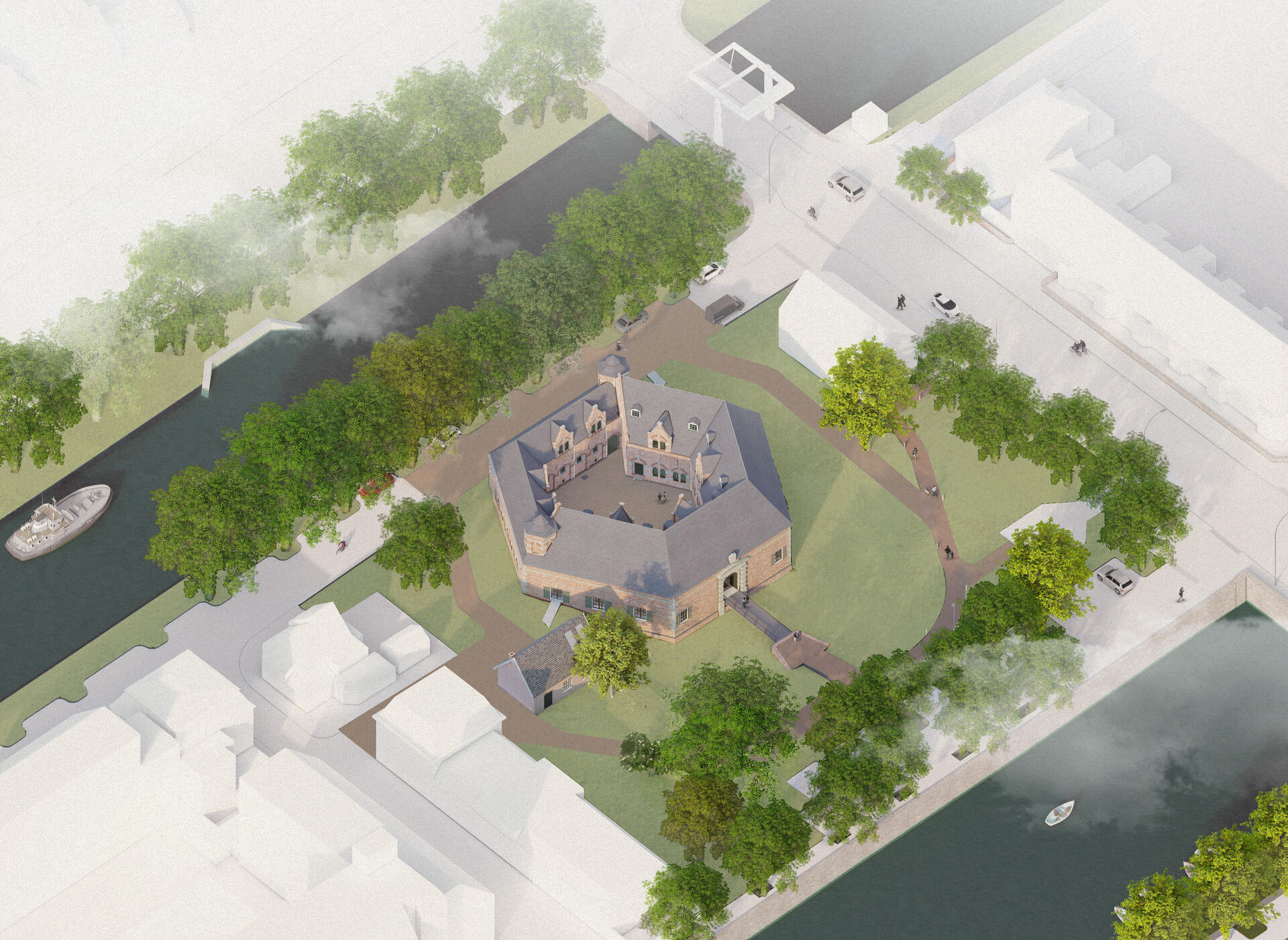
An important design principle was that the building would be accessible to everyone. That is why an elevator has been included in the building and all floors on the first floor have been brought to one level. For this purpose, a non-monumental floor has been lowered locally. To achieve this, the old truss legs have been extended in a traditional manner.
The Kruithuis has not only gained a new perspective through the repurposing, but is also future-proof in terms of sustainability. The building is equipped with a sustainable climate installation and the building envelope is appropriately insulated. The air conditioning and electricity are located under the new insulated concrete floor. The building has an A++ energy label. All adjustments for this have been designed carefully and with respect for the monument.
The interior uses circular materials. The existing slates of the roof have been replaced, the old slates that became available have been reused in the interior. Based on a number test setups, the method of attachment and the pattern have been determined for the unusual and innovative wall coverings of the new entrance to the building. In addition, the oak wood from the ground floor floor has been incorporated into the reception desk.
Color research has been carried out into the original use of color in the Kruithuis. A deep red color was found in the oldest layers of the paintwork on the entrance door, which is also in line with the literature research into the use of color at that time. This served as a starting point for drawing up the color plan, which mainly consists of robust use of color and materials that fit well with the sturdy character of the building.
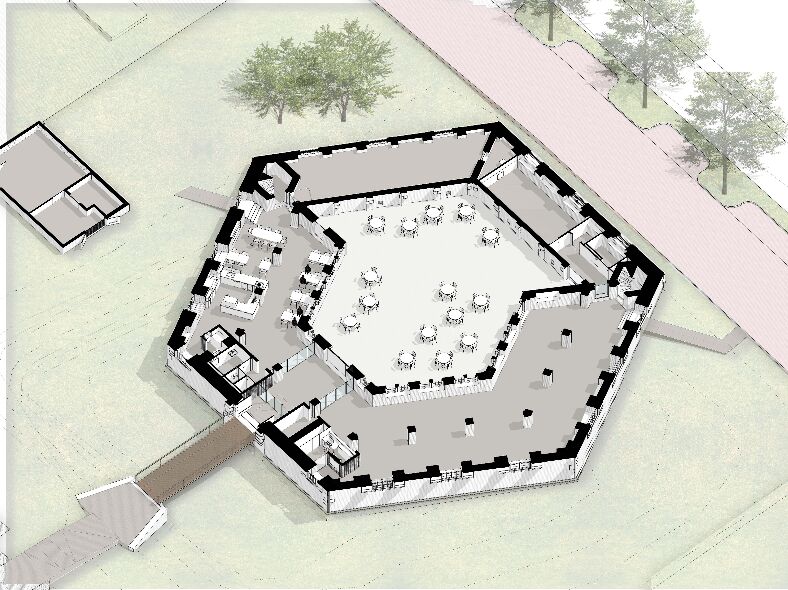
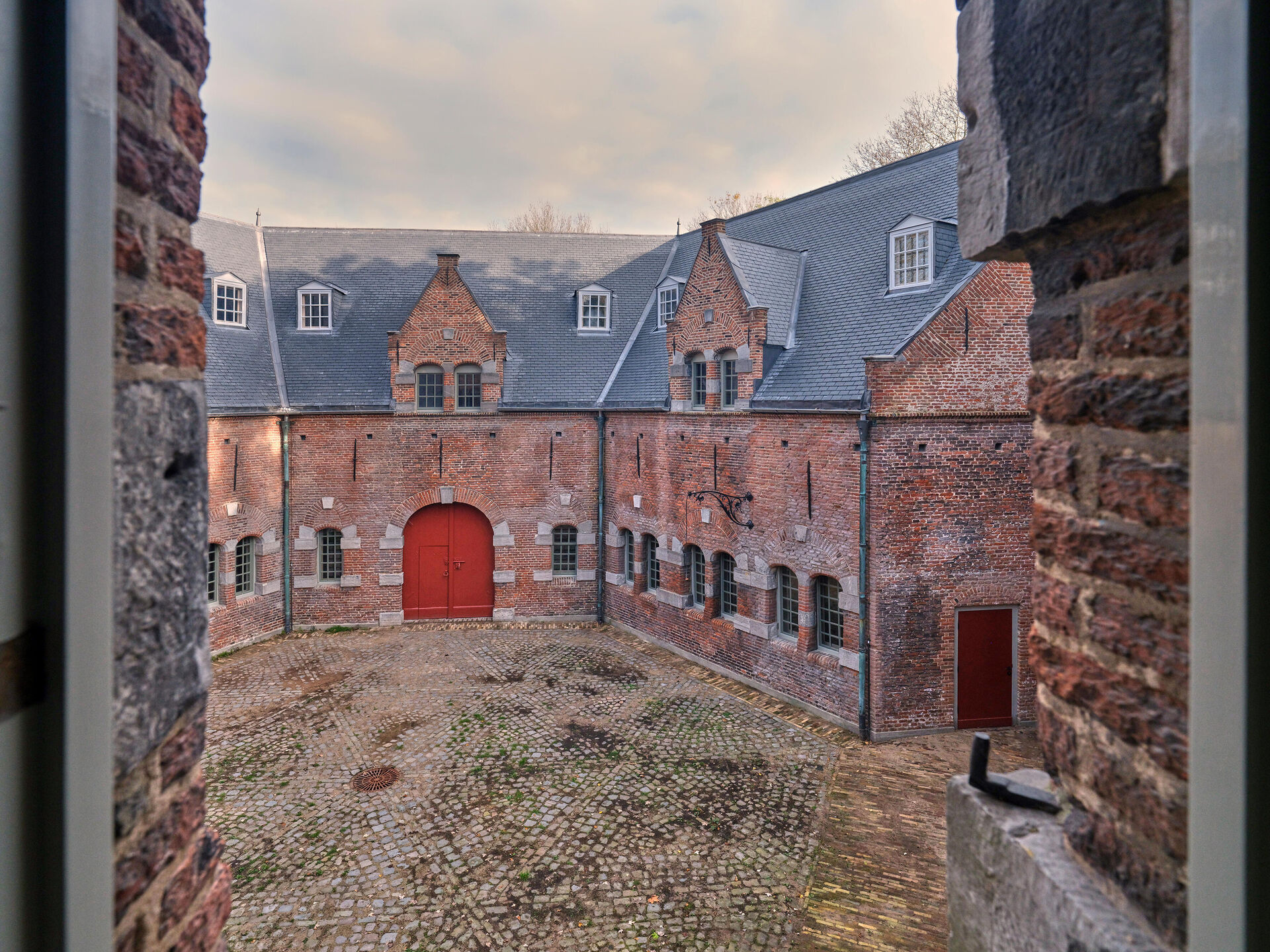
This restoration plan will create a new contemporary bridge and restore part of the canal. During the design, research was done into the method of restoring the facade in combination with restoring the canal. Ultimately, the design was chosen in which the canal profile has such a depth that the natural stone frame comes into its own again and the proportion of the facade, which is now much higher, also comes into its own better. The restoration of the facade was carried out with great restraint so that the patina of the facade was preserved and, for example, the damage from WWII remained visible.
With the Zuid Willemvaartsplan, the park around the Kruithuis has become part of the project. The former Rifle Makers House was also added to the plan during the project. The house, now a municipal monument, has been restored and houses sustainable installations such as the heat pump. The restored building is an asset to the complex.
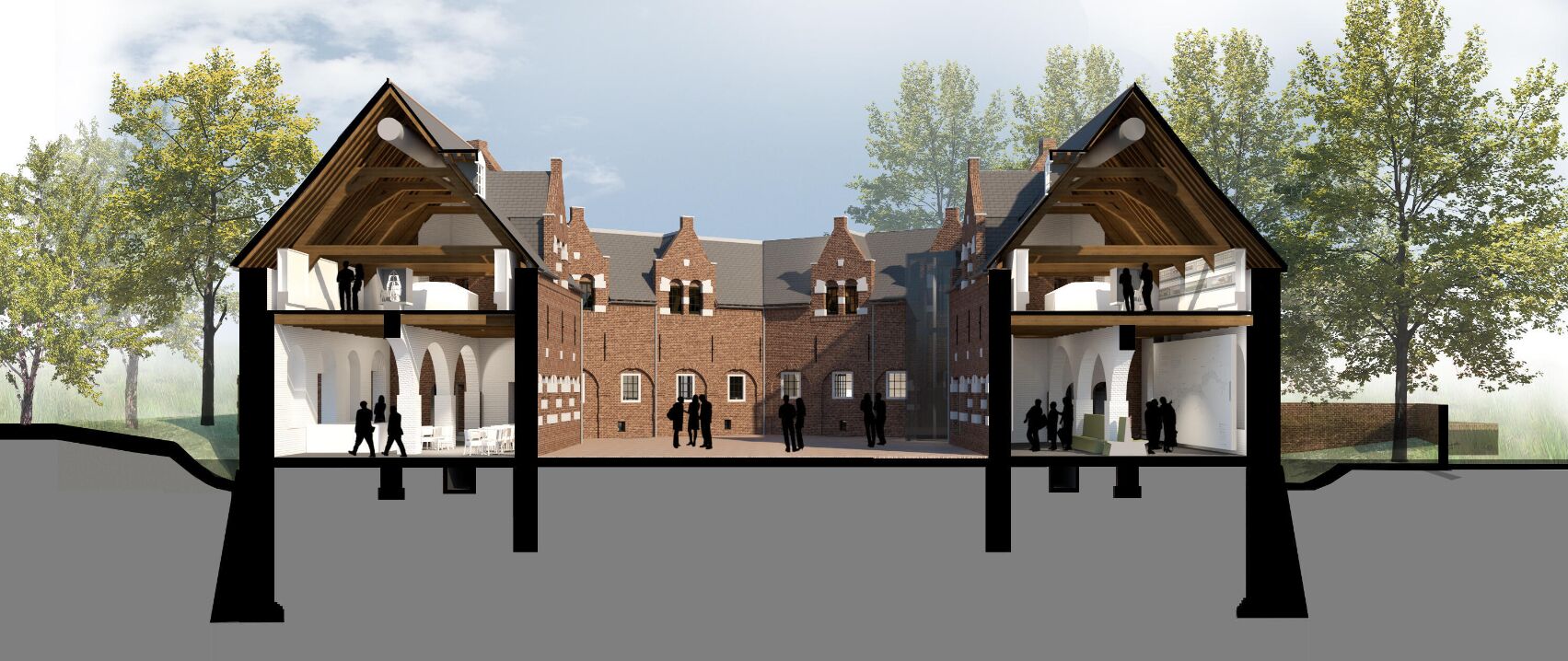
'The building will not only be repurposed as a museum, but will also be made more sustainable: all adjustments for this have been carefully designed and with respect for the monument.'
